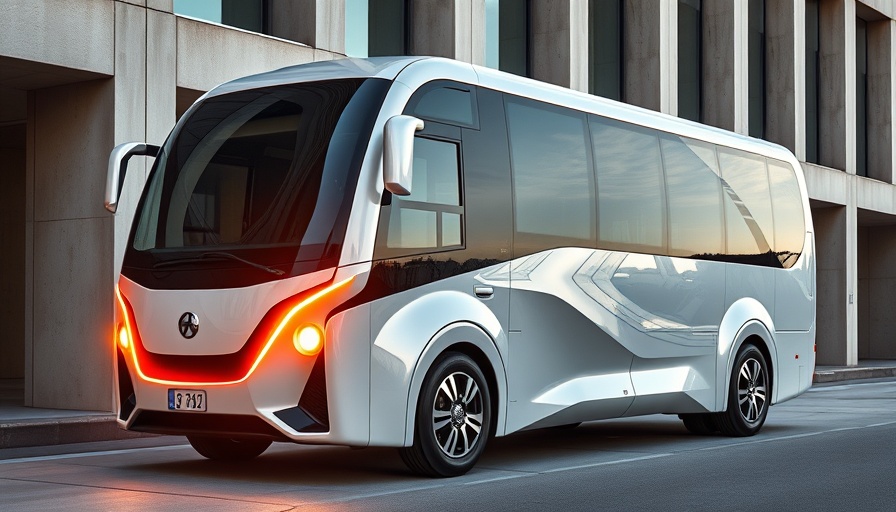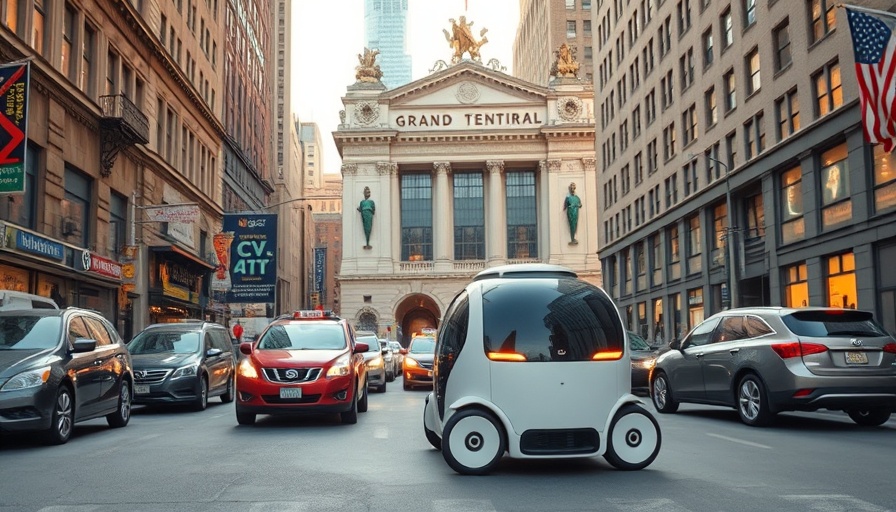
The Future of Transportation: Lyft's Leap into Autonomous Shuttles
In an exciting move for the transportation world, Lyft has announced that it plans to introduce autonomous shuttles by late 2026. This marks a significant development not just for Lyft but for the entire automotive and mobility sector, spotlighting the continuing shift towards self-driving technology in urban environments.
Lyft's shuttles will be manufactured by the Austrian company Benteler Group, boasting a unique design without traditional steering wheels or pedals. With the capacity to accommodate up to nine seated and six standing passengers, these vehicles are engineered to provide a comfortable ride for groups, particularly useful in bustling city settings and at airports. This partnership suggests a solid commitment from Lyft to ensure transportation remains efficient, particularly crucial as cities evolve to accommodate increased populations and tourism.
Competition with Uber: Who Will Lead the Autonomous Vehicle Revolution?
Lyft’s announcement comes as its main competitor, Uber, pushes forward with its own extensive plans for self-driving vehicles. Uber has secured deals with various partners, integrating robotaxis from companies like Waymo and Volkswagen across several major cities. This vigorous race between ride-hailing giants emphasizes the ongoing battle to establish a foothold in the rapidly evolving autonomous vehicle landscape.
While Lyft is advancing with its shuttle initiative, it has also implemented plans to incorporate autonomous vehicles from May Mobility in Atlanta later this year and is exploring partnerships with Mobileye, although the specifics remain vague. As a user, this competition signifies potential benefits such as improved safety features, lower costs, and increased convenience as these technologies mature.
Understanding the Technology Behind Autonomous Shuttles
At the heart of Lyft’s autonomous shuttles is Mobileye’s technology, which powers the Holon brand's fleet. Understanding how this technology functions is essential for consumers curious about the safety and reliability of these vehicles. In essence, Mobileye focuses on creating advanced driver-assistance systems that enhance vehicle safety while paving the way towards full autonomous capability.
Consumers should note that these advancements not only promise an enhanced ride experience but also the potential to lower emissions as electric vehicles become the standard in urban transit, creating a more sustainable future for cities plagued by traffic congestion and air pollution.
What This Means for Future Automotive Trends
Lyft’s plans are indicative of broader automotive innovations propelling the industry towards a future where electric powertrains and autonomous driving are no longer futuristic aspirations but imagined realities. This trend could revolutionize individual travel, urban infrastructure, and public transportation, significantly altering how people view mobility and commute options.
As consumers embrace these automotive technologies, knowledge about their implications becomes essential. Embracing autonomous transportation could lead to safer roads, smarter urban planning, and enhanced access to transportation for everyone, including those unable to drive.
Final Thoughts on Autonomous Transportation
Lyft’s launch of shuttle services in 2026 signifies a pivotal moment in the transportation industry, mirroring the rapid advancements in automotive technology that are set to change how we travel. As competition with rivals like Uber heats up, it becomes essential for consumers to stay informed about these developments and what they could mean for their daily lives.
If you are curious about how autonomous vehicles could normalize in your communities, it's time to explore more about these innovations. Following Lyft’s progress, you can actively engage in discussions and learn about the impacts of these technologies. Stay updated, as the future of transportation is right around the corner!
 Add Row
Add Row  Add
Add 




Write A Comment